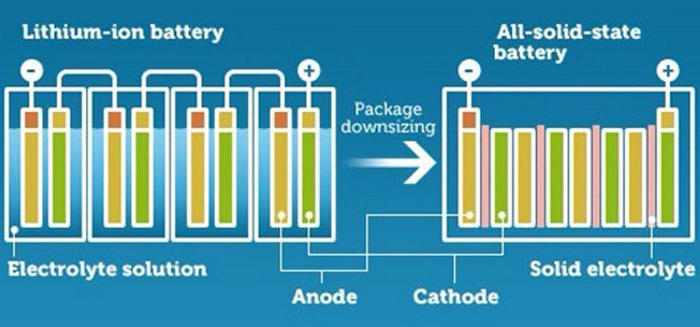-
Call Us
0086-592-7161550 -
Email us
ping@aotbattery.com -
Skype
ping@aotbattery.com
Call Us
0086-592-7161550Email us
ping@aotbattery.comSkype
ping@aotbattery.comIn the manufacturing process of lithium-ion batteries, there are three crucial items that must be strictly controlled:One is dust.The second is metal particles.The third is moisture;
Dust and metal particles that are not properly controlled can directly lead to safety accidents such as internal short circuits, fires, and combustion within the battery; If moisture is not effectively controlled, it can also cause significant harm to battery performance and lead to serious quality accidents!
So it is crucial to control the water content of the main materials such as electrode sheet, battery separators, and battery electrolyte in the manufacturing process.

1.1. Battery bulging and leakage;
If the water content in a lithium-ion battery is too high due to battery swelling and leakage, it will react chemically with the lithium salt in the electrolyte to generate HF:
H2O+LiPF6 → POF3+LiF+2HF Hydrofluoric acid (HF) is a highly corrosive acid that has a strong destructive effect on battery performance;
HF can corrode the metal parts inside the battery, the battery case , and the seals, leading to the final appearance of cracks and leakage in the battery.
HF can damage the SEI membrane inside the battery (Solid Electrolyte Interface) and react with the main components of the SEI membrane: ROCO2Li+HF → ROCO2H+LiFLi2CO3+2HF → H2CO3+2LiF
Finally, LiF precipitation is generated inside the battery, causing irreversible chemical reactions of lithium ions on the negative electrode of the battery, consuming active lithium ions and reducing the battery's energy.
When there is enough water, the gas generated will increase the pressure inside the battery, causing the battery to deform under stress, leading to risks such as swelling and leakage.
The situation of battery bulging and supporting the boot cover encountered during the use of mobile phones or digital electronic products in the market is mostly caused by high internal moisture and gas production bulging in lithium batteries.
2.The internal resistance of the battery increases
The internal resistance of a battery is one of the most important performance parameters, which is the main indicator of the difficulty of ion and electron transmission inside the battery, and directly affects the cycle life and operating status of the battery; The smaller the internal resistance, the less voltage the battery occupies during discharge, and the more energy it outputs.
When the water content increases, POF3 and LiF precipitates are generated on the surface of the SEI membrane (Solid Electrolyte Interface) of the battery, disrupting the density and uniformity of the SEI membrane, causing the internal resistance of the battery to gradually increase and increase, and the discharge capacity of the battery to continuously decrease.
3. Reduced cycle life
Excessive water content damages the SEI film of the battery, gradually increasing the internal resistance, reducing the discharge capacity of the battery, and shortening the battery's usage time after each full charge. The number of charging and discharging cycles that the battery can use normally will naturally decrease, and the battery's usage time (lifespan) will also be shortened.

Tel/Whatsapp: 0086-592-7161550

Scan to wechat:
